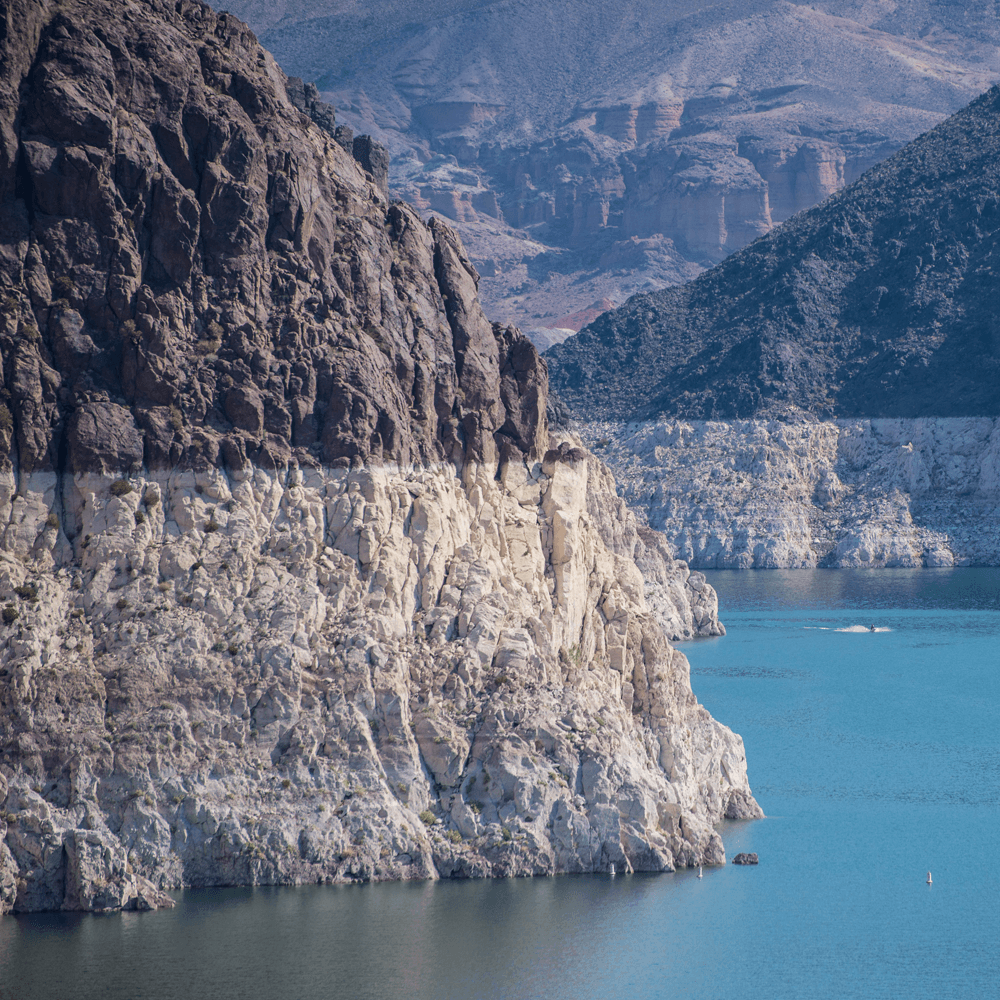AMWUA Blog
BY: Warren TenneyLower Basin States Plan Action for Critical Time on the Colorado River

Water managers in Arizona, California, Nevada, and the US Bureau of Reclamation have been working hard to determine what additional action is necessary to keep Lake Mead from falling below critical elevation levels.
In August, Reclamation confirmed that the Colorado River would be in a Tier 1 shortage in 2022. At that time, Reclamation’s projections also showed that Lake Mead’s elevations could be at or below 1,030 feet within 24 months, which triggered a provision in the Drought Contingency Plan (DCP) that the Lower Colorado River Basin States – Arizona, California, Nevada – and Reclamation are to consult and develop a plan to prevent the Lake from dropping below 1,020 feet. The Lower Basin States understand the seriousness of the current conditions and projections for the Colorado River and that this is a critical time to step forward and take more action.
The Lower Basin States recently unveiled what is dubbed as the 500+ Plan during a webinar held by Reclamation. Through modeling, the Lower Basin States determined that another 500,000 acre-feet of water needs to be saved annually in Lake Mead through 2026 to bend the model curve and decrease the risk of Lake Mead’s elevation reaching that critical 1,020-foot mark. This 500,000 acre-feet of water would be on top of the already agreed-upon reductions outlined in DCP.
So, where will 500,000 acre-feet of additional water come from? The water managers in the three states, along with Reclamation, are reaching out to tribal and non-tribal water users to see who would be willing to voluntarily contribute water. It is estimated that $100 million annually will be needed to incentivize some of the targeted supplies to be left in Lake Mead. Arizona has already pledged $40 million for this purpose.
This Herculean effort to find an additional 500,000 acre-feet of water to leave in Lake Mead shows the collective urgency of the Lower Basin States to take action now. The goal is to have this 500+ Plan completed by the end of the year so it can be implemented in 2022. The same effort would then be made to secure an extra 500,000 acre-feet annually in 2023 through 2026.
So what does this mean for Arizona, and more specifically, the Valley? Under the 500+ Plan, Arizona’s contribution is anticipated to be about 223,000 acre-feet. Arizona’s water leaders have been working with Colorado River water users in the State to put together supplies that would reach this target.
Specifically, as part of this Plan, an additional 93,000 acre-feet of system conservation is being sought among tribes and municipalities who receive Colorado River water from the Central Arizona Project (CAP). Municipalities, including the AMWUA cities, are considering what, if any, they can contribute to help protect Lake Mead. It is recognized this is a challenge since municipalities already have plans and agreements in place for how they are to use their Colorado River water in 2022. Yet, they are still willing to take a serious look to see if they can contribute to this 500+ Plan, as more participation benefits Arizona.
Whether a municipality is able to leave water in Lake Mead or not, all AMWUA cities and other municipalities that receive Colorado River water will be impacted financially and thus contribute indirectly to the 500+ Plan. The most immediate impact will be an increase in the delivery rates they pay to the Central Arizona Project. This is because there will be less water delivered through the CAP system, which will affect CAP’s fixed costs. The Central Arizona Project recognizes this will cause an unexpected $10 per acre-foot increase to the $193 per acre-foot delivery rates that municipalities will pay in 2022. Depending on the cities’ allocation of Colorado River water, this additional cost could range from $43,000 to well over $1 million with varying impacts to water utilities’ budgets. So CAP is considering using $10 million of its reserves to cover a portion of that increase to help ease this unanticipated rate spike. With these higher costs for Colorado River water, municipalities will have to adjust their budgets and forego paying for upgrades and maintenance projects for their own municipal water systems.
Over the next few weeks, we’ll have a better idea of how Arizona will pull together its contribution to the 500+ Plan. During the webinar, Arizona Department of Water Resources Director Tom Buschatzke noted that the goal is to sign a general pact on the amount of water to be saved by mid-December and have any additional agreements among the parties ironed out early next year so that the water savings can be paid for and left in Lake Mead in 2022.
The announcement of the 500+ Plan and the concerted effort to make it work demonstrates the tireless effort to protect the health of the Colorado River by the Arizona Department of Water Resources and the Central Arizona Project, the primary entities negotiating on behalf of Arizona, along with water managers in California and Nevada. And once again, Arizona water providers are willing to rally together and determine how they can contribute to this latest endeavor to safeguard the Colorado River.
Please look at this recent blog to better understand system conservation and its role in addressing the health of the Colorado River.
To print or save this week's blog, a PDF version is available HERE .
For over 50 years, the Arizona Municipal Water Users Association has worked to protect our member cities’ ability to provide assured, safe, and sustainable water supplies to their communities. For more water information, visit www.amwua.org .
Sign up for the AMWUA Blog:
Sign Up Now For Email Marketing you can trust
